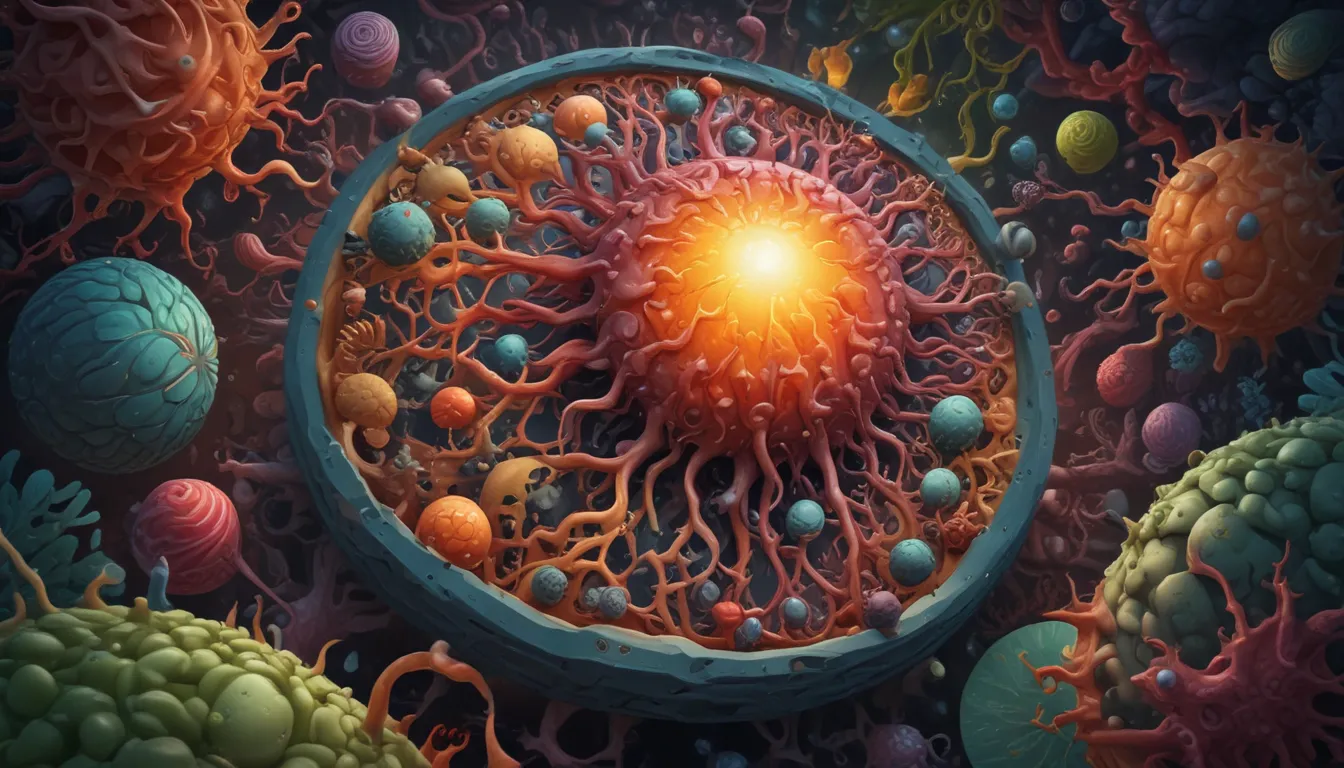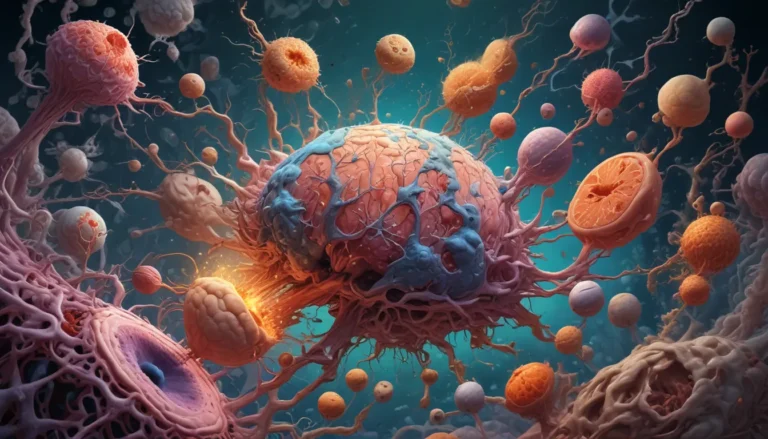A Note About Images: The images used in our articles are for illustration purposes only and may not exactly match the content. They are meant to engage readers, but the text should be relied upon for accurate information.
Endosymbiosis is a captivating biological phenomenon that has significantly influenced the evolution of life on Earth. This unique process involves two organisms forming a mutually beneficial relationship, where one organism lives inside the other. The intricate connections between organisms have led to remarkable adaptations and innovations throughout history. In this article, we will delve into 12 astonishing facts about endosymbiosis that will expand your knowledge and appreciation for the complexities of the biological world.
Uncovering the Marvels of Endosymbiosis
Endosymbiosis is not limited to scientific theories—it is a prevalent occurrence in various ecosystems, from coral reefs to the human body. The process of one organism living inside another has resulted in the creation of essential cell components like mitochondria and chloroplasts, which have shaped the evolution of life on Earth. These symbiotic relationships have a profound impact on the world around us, highlighting the interconnectedness of all living organisms.
The Intriguing Origins of Mitochondria
Mitochondria, known as the powerhouses of our cells, have a fascinating origin tied to endosymbiosis. According to the endosymbiotic theory, mitochondria were once free-living bacteria that were engulfed by a host cell. Over time, this symbiotic relationship evolved, leading to the integration of these bacteria as essential components of our cells.
The Evolution of Chloroplasts and Photosynthesis
Similarly, chloroplasts, the organelles responsible for photosynthesis in plants, are believed to have originated from endosymbiotic relationships between ancestral eukaryotic cells and photosynthetic bacteria. This unique association gave rise to the remarkable ability of plants to convert sunlight into energy, essential for their survival.
Endosymbiosis in Animals and Protists
Endosymbiosis is not exclusive to plant cells—it also occurs in various animal species and protists. For example, some marine invertebrates have established symbiotic relationships with photosynthetic algae, benefiting from the algae’s photosynthetic capabilities. Similarly, certain protists engage in endosymbiotic relationships with photosynthetic algae, facilitating nutrient exchange and protection for both partners.
The Formation of Complex Cells
Endosymbiosis has played a pivotal role in the emergence of complex cells, known as eukaryotic cells. The integration of different types of bacteria and archaea into a single cell led to the development of specialized organelles and increased cellular complexity, enabling organisms to thrive in diverse environments.
Impact of Endosymbiosis on Evolution
Endosymbiosis is considered a driving force in evolution, as it facilitates the incorporation of genetic material from one organism into another. This genetic exchange can lead to the emergence of new traits and adaptations, ultimately influencing the course of evolution and diversification of species.
The Fascinating World of Lichens and Coral Reefs
Lichens serve as a unique example of symbiosis, involving fungi and algae or cyanobacteria. The fungal partner provides a protective environment for the photosynthetic partner, allowing them to thrive in various habitats such as rocks, trees, and even the harsh Arctic tundra. Similarly, coral reefs, known as the rainforests of the sea, are the result of a mutualistic relationship between corals and photosynthetic algae. This symbiosis provides energy through photosynthesis and essential nutrients for corals, highlighting the intricate balance of marine ecosystems.
Nutrient Recycling and Human Health
Endosymbiosis also plays a vital role in nutrient recycling within ecosystems. For example, nitrogen-fixing bacteria establish symbiotic relationships with legume plants, converting atmospheric nitrogen into a form that can be readily absorbed by the plant, enhancing soil fertility. Additionally, endosymbiotic relationships in the human gut microbiota contribute to digestion, immune function, and overall well-being, emphasizing the importance of microbial interactions in human health.
Horizontal Gene Transfer and Endosymbiotic Theory
Endosymbiosis can facilitate horizontal gene transfer, allowing genetic material to be exchanged between organisms horizontally. This process contributes to genetic diversity and adaptation in various species, shaping evolutionary trajectories. The endosymbiotic theory, proposed by Lynn Margulis, revolutionized our understanding of cellular evolution and continues to influence scientific research, emphasizing the interconnectedness of all living organisms.
Conclusion
In conclusion, endosymbiosis is a captivating biological process that has significantly impacted the evolution of life on Earth. Through symbiotic relationships between organisms, essential cell components like mitochondria and chloroplasts have emerged, shaping the complexity and diversity of life as we know it. Studying endosymbiosis provides valuable insights into the interconnectedness of all living things and the mechanisms driving evolutionary change. As we delve deeper into this fascinating field, we gain a deeper understanding of our cellular origins and the potential for future scientific discoveries and advancements.
FAQs About Endosymbiosis
- Q: What is endosymbiosis?
-
A: Endosymbiosis is a biological process where one organism lives inside another organism, forming a mutually beneficial relationship.
-
Q: How does endosymbiosis contribute to evolution?
-
A: Endosymbiosis has played a significant role in the evolution of life by facilitating the emergence of complex cellular structures and increasing the diversity of organisms.
-
Q: What are examples of endosymbiotic relationships?
-
A: Examples of endosymbiotic relationships include the association between mitochondria and eukaryotic cells, as well as the relationship between chloroplasts and plant cells.
-
Q: How does endosymbiosis impact cellular function?
-
A: Endosymbiosis allows for the specialization of certain cellular organelles, such as mitochondria and chloroplasts, which perform vital functions within eukaryotic cells.
-
Q: Can endosymbiosis occur between different species?
-
A: Yes, endosymbiosis can occur between different species, as long as there is a mutually beneficial association between the two organisms involved.
-
Q: How has the study of endosymbiosis impacted our understanding of evolution?
-
A: The study of endosymbiosis has provided important insights into the mechanisms of evolutionary change and has expanded our understanding of the origins and diversification of life on Earth.
-
Q: Are there any potential applications of endosymbiosis research?
- A: Endosymbiosis research has the potential to inform advancements in fields such as biotechnology and medicine, as we unravel the complexities of cellular interactions and symbiotic relationships.
Endosymbiosis opens up a world of wonder and intrigue, shedding light on the interconnectedness of all living organisms. As we continue to explore the complexities of cellular biology, we uncover new insights into the origins of life and the mechanisms that drive evolutionary change. Each fact about endosymbiosis unveils a piece of the intricate puzzle of life on Earth, reminding us of the awe-inspiring beauty and diversity that surrounds us. Let’s embark on a journey of discovery and appreciation for the marvels of symbiotic relationships that shape our world.






